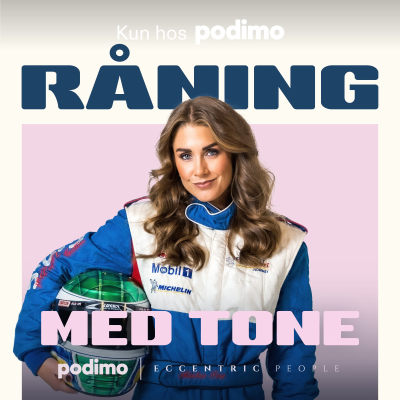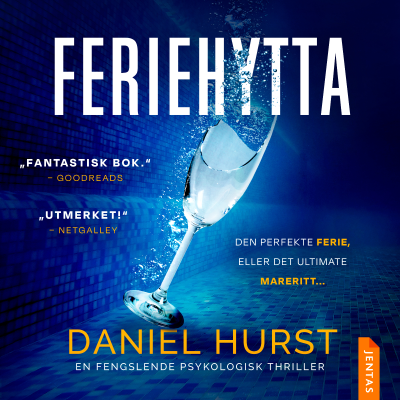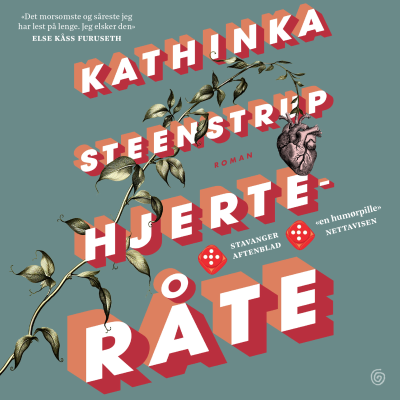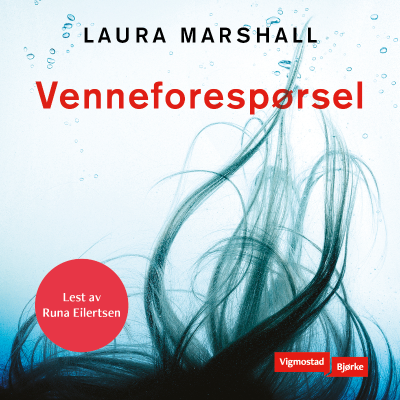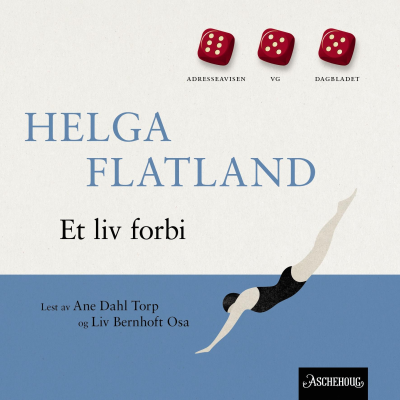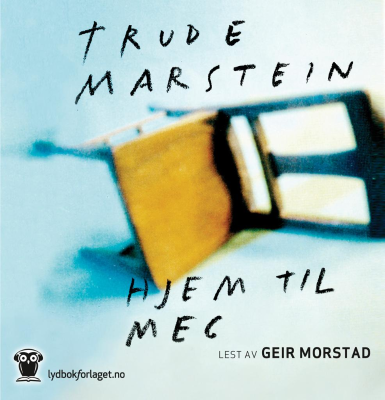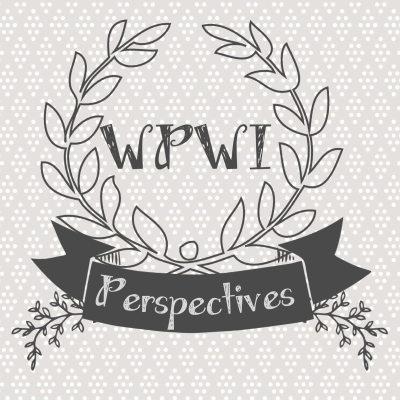
WPWI Perspective
engelsk
Opplysning
Prøv gratis i 60 dager
99 kr / Måned etter prøveperioden.Avslutt når som helst.
- 20 timer lydbøker i måneden
- Eksklusive podkaster
- Gratis podkaster
Les mer WPWI Perspective
Much to do about everything weight loss.
Alle episoder
12 EpisoderPathophysiology of Obesity: Applied.
This past weekend I gave a lecture at the Physician Moms Group medical conference covering the pathophys behind obesity. While I still will put something more technically together, today I had an interesting conversation that gave me the idea of posting about how this information is can be used and explained in “real-life” terms. As always these audio recordings are for education purposes only, and not meant to act in any way as medical advice. Please consult your personal physician for your personal medical advice.
3min Audio: The Art of Being Healthful
Ok, my new little speaker kind of stinks. I could have been hitting it with my hand as I paced around speaking though!?! But, the good news is I know out of all the people out there, my group knows nothing is perfect. #nofancybellsorwhistleshere 😉
The Obesity Paradox
OBESITY PARADOX The idea that a high BMI appears to be protective and decreases death in people, but also is associated with increased risk of death. ***More simply put – there is data out there that shows being overweight can be a good thing for some, yet a bad thing for others*** ACRONYMS HTN : hypertension Normal BMI (Nml) <25 Overweight (OW) BMI 25-29.9 Obese (Ob) >= 30 EVIDENCE SHOWING OW+ IS BAD FOR OUR HEALTH: Tons of it out there, I don’t think I need to list too many. But here are some as it is still important to remember this. ARCH INTERN MED. [HTTPS://WWW.NCBI.NLM.NIH.GOV/PUBMED/12196085#] 2002 SEP 9;162(16):1867-72.OVERWEIGHT AND OBESITY AS DETERMINANTS OF CARDIOVASCULAR RISK: THE FRAMINGHAM EXPERIENCE.WILSON PW [HTTPS://WWW.NCBI.NLM.NIH.GOV/PUBMED/?TERM=WILSON%20PW%5BAUTHOR%5D&CAUTHOR=TRUE&CAUTHOR_UID=12196085]1, D’AGOSTINO RB [HTTPS://WWW.NCBI.NLM.NIH.GOV/PUBMED/?TERM=D%27AGOSTINO%20RB%5BAUTHOR%5D&CAUTHOR=TRUE&CAUTHOR_UID=12196085], SULLIVAN L [HTTPS://WWW.NCBI.NLM.NIH.GOV/PUBMED/?TERM=SULLIVAN%20L%5BAUTHOR%5D&CAUTHOR=TRUE&CAUTHOR_UID=12196085], PARISE H [HTTPS://WWW.NCBI.NLM.NIH.GOV/PUBMED/?TERM=PARISE%20H%5BAUTHOR%5D&CAUTHOR=TRUE&CAUTHOR_UID=12196085], KANNEL WB [HTTPS://WWW.NCBI.NLM.NIH.GOV/PUBMED/?TERM=KANNEL%20WB%5BAUTHOR%5D&CAUTHOR=TRUE&CAUTHOR_UID=12196085]. Looked at relationships between BMI and CVD risk factors, CVD endpoints prospectively from the Framingham HEart Study of ppl 35-75 who were followed for up to 44 years. CV endpoints the looked at: Angina, MI, Coronary hrt dz, or stroke. Conclusions: the overweight category is assoc with increased relative and population risk for HTN, and CVD. Ob risk of HTN was 42% OW risk of HTN was 27.8% Nml risk of HTN 15.3% NHANES III (1988-1994) TO NHANES III (1999-2000) Showed increase prevalence of Metabolic Syndrome (MetSyn) and that weight was associated with increased risk of MetSyn: Nml 5% OW 22% Ob 60% http://care.diabetesjournals.org/content/34/1/216.long [http://care.diabetesjournals.org/content/34/1/216.long] N ENGL J MED. [HTTPS://WWW.NCBI.NLM.NIH.GOV/PUBMED/12151467#] 2002 AUG 1;347(5):305-13.OBESITY AND THE RISK OF HEART FAILURE.KENCHAIAH S [HTTPS://WWW.NCBI.NLM.NIH.GOV/PUBMED/?TERM=KENCHAIAH%20S%5BAUTHOR%5D&CAUTHOR=TRUE&CAUTHOR_UID=12151467]1, EVANS JC [HTTPS://WWW.NCBI.NLM.NIH.GOV/PUBMED/?TERM=EVANS%20JC%5BAUTHOR%5D&CAUTHOR=TRUE&CAUTHOR_UID=12151467], LEVY D [HTTPS://WWW.NCBI.NLM.NIH.GOV/PUBMED/?TERM=LEVY%20D%5BAUTHOR%5D&CAUTHOR=TRUE&CAUTHOR_UID=12151467], WILSON PW [HTTPS://WWW.NCBI.NLM.NIH.GOV/PUBMED/?TERM=WILSON%20PW%5BAUTHOR%5D&CAUTHOR=TRUE&CAUTHOR_UID=12151467], BENJAMIN EJ [HTTPS://WWW.NCBI.NLM.NIH.GOV/PUBMED/?TERM=BENJAMIN%20EJ%5BAUTHOR%5D&CAUTHOR=TRUE&CAUTHOR_UID=12151467], LARSON MG [HTTPS://WWW.NCBI.NLM.NIH.GOV/PUBMED/?TERM=LARSON%20MG%5BAUTHOR%5D&CAUTHOR=TRUE&CAUTHOR_UID=12151467], KANNEL WB [HTTPS://WWW.NCBI.NLM.NIH.GOV/PUBMED/?TERM=KANNEL%20WB%5BAUTHOR%5D&CAUTHOR=TRUE&CAUTHOR_UID=12151467], VASAN RS [HTTPS://WWW.NCBI.NLM.NIH.GOV/PUBMED/?TERM=VASAN%20RS%5BAUTHOR%5D&CAUTHOR=TRUE&CAUTHOR_UID=12151467]. 5881 participants in Framingham. Used Cox proportional-hazards model Found: For each 1 unit increase in BMI women’s risk of heart failure increased by 7%, 5% in men. NURSES’ HEALTH STUDY https://www.ncbi.nlm.nih.gov/pubmed/7872581 [https://www.ncbi.nlm.nih.gov/pubmed/7872581] 114,281 female registered nurses aged 30 to 55 years who did not have diagnosed diabetes mellitus, coronary heart disease, stroke, or cancer in 1976. Over 11 states. Findings: BMI <22 assoc with lowest risk of T2DM BMI >35 was associated with 6X higher “relative risk” of T2DM LOOK AHEAD STUDY AND OTHERS Have shown that even a 5% weight loss can improve risk profiles for diabetes and cardiovascular health LANCET. [HTTPS://WWW.NCBI.NLM.NIH.GOV/PUBMED/25129328#] 2014 AUG 30;384(9945):755-65. DOI: 10.1016/S0140-6736(14)60892-8. EPUB 2014 AUG 13.BODY-MASS INDEX AND RISK OF 22 SPECIFIC CANCERS: A POPULATION-BASED COHORT STUDY OF 5·24 MILLION UK ADULTS.BHASKARAN K [HTTPS://WWW.NCBI.NLM.NIH.GOV/PUBMED/?TERM=BHASKARAN%20K%5BAUTHOR%5D&CAUTHOR=TRUE&CAUTHOR_UID=25129328]1, ET. AL. “Assuming causality, 41% of uterine and 10% or more of gallbladder, kidney, liver, and colon cancers could be attributable to excess weight. We estimated that a 1 kg/m(2) population-wide increase in BMI would result in 3790 additional annual UK patients developing one of the ten cancers positively associated with BMI.” ***granted i’m not sure any paper should have been published that uses the world “assume.” After all that just makes a “bleep” out of you and me. But as other studies do seem to show an assoc we’ll let it slide*** ************************************************** So there is a lot of data out there that shows associations between excess fat mass and MetSyn, HR, cancers, and 200+ diseases. From some evidence you would conclude that obesity does cause health problems. THE OBESITY PARADOX: The strange thing is of the people getting diseases, the people who have the better prognosis are the ones overweight!!! And while all the above more talk about risk factors, we still do see patients of normal weight getting HTN, having coronary hrt disease, T2DM, getting the other 200+ diseases. AM J MED. [HTTPS://WWW.NCBI.NLM.NIH.GOV/PUBMED/17904457#] 2007 OCT;120(10):863-70.OBESITY PARADOX IN PATIENTS WITH HYPERTENSION AND CORONARY ARTERY DISEASE.URETSKY S [HTTPS://WWW.NCBI.NLM.NIH.GOV/PUBMED/?TERM=URETSKY%20S%5BAUTHOR%5D&CAUTHOR=TRUE&CAUTHOR_UID=17904457]1, ET. AL. 22,576 ppl with HTN and CAD Outcomes looked at: first occurrence of death, nonfatal myocardial infarction, or nonfatal stroke. Obese Class I(30-35) had a HR of 0.68 compared to Nml BMI patients. LANCET. [HTTPS://WWW.NCBI.NLM.NIH.GOV/PUBMED/16920472#] 2006 AUG 19;368(9536):666-78. ASSOCIATION OF BODYWEIGHT WITH TOTAL MORTALITY AND WITH CARDIOVASCULAR EVENTS IN CORONARY ARTERY DISEASE: A SYSTEMATIC REVIEW OF COHORT STUDIES.ROMERO-CORRAL A, ET AL. [HTTPS://WWW.NCBI.NLM.NIH.GOV/PUBMED/?TERM=ROMERO-CORRAL%20A%5BAUTHOR%5D&CAUTHOR=TRUE&CAUTHOR_UID=16920472] Method: selected cohort studies that provided risk estimates for total mortality, with or without cardiovascular events, on the basis of bodyweight or obesity measures in patients with CAD, and with at least 6 months’ follow-up. Found: found 40 studies with 250,152 patients that had a mean follow-up of 3.8 years. Patients with(BMI) (ie, <20) had an increased relative risk (RR) for total mortality (RR=1.37 [95% CI 1.32-1.43), and cardiovascular mortality (1.45 [1.16-1.81]), overweight (BMI 25-29.9) had the lowest risk for total mortality (0.87 [0.81-0.94]) and cardiovascular mortality (0.88 [0.75-1.02]) compared with those for people with a normal BMI. Obese patients (BMI 30-35) had no increased risk for total mortality (0.93 [0.85-1.03]) or cardiovascular mortality (0.97 [0.82-1.15]). Patients with severe obesity (> or =35) did not have increased total mortality (1.10 [0.87-1.41]) but they had the highest risk for cardiovascular mortality (1.88 [1.05-3.34]). AM HEART J. [HTTPS://WWW.NCBI.NLM.NIH.GOV/PUBMED/18585492#] 2008 JUL;156(1):13-22. DOI: 10.1016/J.AHJ.2008.02.014. BODY MASS INDEX AND MORTALITY IN HEART FAILURE: A META-ANALYSIS.OREOPOULOS A [HTTPS://WWW.NCBI.NLM.NIH.GOV/PUBMED/?TERM=OREOPOULOS%20A%5BAUTHOR%5D&CAUTHOR=TRUE&CAUTHOR_UID=18585492]1 METHODS: searched the Cochrane Central Register of Controlled Trials, MEDLINE, EMBASE, Scopus, and Web of Science to identify studies with contemporaneous control groups (cohort, case-control, or randomized controlled trials) that examined the effect of obesity on all-cause and cardiovascular mortality. RESULTS:Nine observational studies met final inclusion criteria (total n = 28,209). Mean length of follow-up was 2.7 years. both overweight, RR 0.84, 95% CI 0.79-0.90) and obesity, RR 0.67, 95% CI 0.62-0.73) were associated with lower all-cause mortality in pts with CHF LOGUE J, WALKER JJ, LEESE G ET AL (2013) THE ASSOCIATION BETWEEN BMI MEASURED WITHIN A YEAR AFTER DIAGNOSIS OF TYPE 2 DIABETES AND MORTALITY. DIABETES CARE 36: 887–93 Study of 106 640 participants in Scotland. The lowest risk of mortality was in those diagnosed with type 2 diabetes and a BMI of around 30 kg/m2 , and those with a BMI between 20 and 25 kg/m2 at time of diagnosis had a 20–30% increased risk of death during the follow-up period. OBESITY PARADOX IN END-STAGE KIDNEY DISEASE PATIENTS. PROG CARDIOVASC DIS [HTTPS://WWW.NCBI.NLM.NIH.GOV/PMC/ARTICLES/PMC4733536/#]. AUTHOR MANUSCRIPT; AVAILABLE IN PMC 2016 JAN 31. JONGHA PARK [HTTPS://WWW.NCBI.NLM.NIH.GOV/PUBMED/?TERM=PARK%20J%5BAUTHOR%5D&CAUTHOR=TRUE&CAUTHOR_UID=24438733], MD, ET AL. 9,714 patients 4yr f/u Mortality as outcome Class 1 Ob had the best relative risk of .73, BMI <20 had the worst risk. EXPLAIN YOURSELF THAN LUCY There are the easy explanations that seemingly do factor in for many of the above results… * Studies looking to discover risk factors study risks of Nml to Ob, vs Obesity paradox studies are more comparing Obese to Nml. More minor, but could play a role. * Obviously BMIs of 20 in a patient with a disease increase mortality from a cachexia stand point. * The disease itself has caused the lower weight. (Reverse Causality study flaw) * Ppl at Nml BMI could be “more sick” or have a more aggressive form of the disease. * Maybe symptoms are more prominent in the Ob (shortness of breath, increased pain) and thus seek more medical care. * Maybe even the obese are targeted earlier by the medical community for earlier prevention, or have more stringent risk management modifiers. * Maybe Nml BMI people are overlooked because it is taken for granted they are “healthier” and thus at less risk. BUT…There could be a more complex factors affecting some of the population. I mean come one we are physicians, we don’t settle with easy 😉 1. The idea that exposure to some “harm” is protective. We see this in other places…nature animals being exposure to low dose of some food that are poison actually cause the animal to turn on some gene expression that help them in other ways. (I am completely blanking on this term today for some reason, someone please help me out!). Even to if low doses of UV exposure is healthier, and maybe some people shouldn’t be wearing as much sunscreen?!? [please don’t come after me dermatologists 😉 ] 2. No fat is created equal: Subcutaneous fat in the thighs SubC fat in abdomen Visceral fat “Dysfunctional fat” basically it is what happens if the adiposites do not develop healthfully… with adequate blood flow sources, abundant mitochondria, and or supportive structures. If they start to lack in any of these factors, especially when they hypertrophy, hypoxia occurs, the fat cells die and cause inflammation —> lots of downstream bad things. Fat cells that developed in the thighs for example have the least amount of propensity to become “dysfunctional,” vs fat around the heart and liver tend to be the worst. And even relatively small amounts of dysfunction fat can be more detrimental, compared to larger volumes in the thighs, for example. This could explain why a “thin” patient with a small “belly pouch” could have a worse outcome could when compared the the guy next door but with more a pannus(subcutaneous abdominal fat). Especially after some hypotensive event where the fat cells are now exposed to a low oxygen environment they otherwise would not have been exposed to. 3. The Metabolically healthy obese person – These people are thought to have a higher capacity to store fat that is less “metabolically active,” to have “benign” fat essentially. Side note: one might be able to improve our genetic expression of factors to help promote good fat….exercise! “A metabolically healthy obese phenotype can be promoted by exercise, but is also linked with intrinsic AT(adipose tissue) molecular characteristics such as efficient fat storage and lipid droplet formation, high adipogenesis capacity, low extracellular matrix fibrosis, angiogenesis potential, adipocyte browning and low macrophages infiltration/activation. Such features are associated with a secretomic profile of human AT which is protective for the cardiovascular system. In the present review, we summarize the existing knowledge on the molecular mechanisms underlying the ‘obesity paradox’ and whether fatness can be healthy too.” study link: https://www.ncbi.nlm.nih.gov/pubmed/28549096 ************************************************** SO WHAT TO DO WITH ALL THIS?? After all, we still pretty much know a Nml BMI is associated with decreased risk of pretty much all cause morbidity and mortality compared to a high BMI, and not only that we do see health benefits in decreasing abnormally high BMIs. Basically I see this information as being helpful in two basic ways: Stop thinking about weight loss in terms of body image. It is easy to get lost in how we “should” look based on cultural pressure. But how many times have culture pressures been wrong?…many, many times through history have people gotten things wrong…like lots. And thus a good reminder weight loss is not all about the scale. Each person is different. And also for my own personal admin of WPWI, with recent posts…there is no way for me to screen everyone, know everyone, know their medical and family hx. All we know is pretty much what you have let us know about you through your posts and pictures. That is it. For my first official Friday Informational 😉 I didn’t want it to seem like I am “picking” on normal weight ppl by posting information of why we do not support weight loss in people with nml BMIs. So to prove I am not out to “pick” on anyone, which I have been accused of, I thought I would start with an actual presentation that even in some overweight/obese people weight loss might not actually be the key to improving outcomes! Probably not all OW/Ob people, but in some people…like that female who does not smoke with HTN, BMI 27, maybe she is wasting her time and mental happiness always worrying about weight. Maybe she should more be taking the time making sure she knows about more just eating healthy, and exercise. Exercise not to lose weight, but more to decrease CV risks, but also now to continue to, or continue to have her body promote fat mass being stored in thighs, vs in visceral tissue. Next week, yes we will be talking more, presenting evidence about why WPWI is a support group of those with a history of having elevated BMI to lose weight for potential health benefits. #headsup ***As always please being kind and forgiving of grammatical errors,a physician women only has so much time in her day. #editingstinks ***
Thinking Twice: Feast and Famine
Why Feast And Famine Might Not Be Working ****definition of a diet “working:” ability to lose weight and then maintain that weight loss. So in this instance will people be able to lose weight using this theory AND then maintain it. The quick and dirty if you don’t have time: To quote Dr. Jason Fung’s website, “Eating is a celebration of life. Any diet that does not acknowledge this fact is doomed to failure.” These two sentence he argues support his theory, I would actually argue are the downfall of his theory. My rebuttal would be any diet that does not acknowledge the potential for food addiction, binge eating disorder, and or hedonic obesity is “doomed for failure” to use the above quote. A.) FOOD “ADDICTION” The thing is for people who been exposed to “adiposity” maintaining the sense of food as a reward is quite often dangerous. This sort of mentality can maladaptively accidentally place food up on some pedestal, when really food should “just be food.” Especially with those out there who know, but may not want to admit that food, and more likely carbs, are addictive. Currently, we have not technically “proven” food is addictive in humans, but we are finding it more and more true in mice. Unfortunately we may never be able to actually prove it in humans, as the dirty truth is we can’t do trials on humans as we can on tiny little animals, who take up a small amount of space, eat a relatively small amount of food, who then can be sacrificed to an autopsy at the end of the the study. So we likely are going to more just go on, and lean towards an educated guess that food, especially hyper caloric carbohydrate food is addictive. And if you still can’t get yourself to say it, if you are a, “but how can food be addictive, we need it to live,” at the very minimum you could maybe admit that some food has addictive qualities. The question is will you really be able to fast the next day, I mean really? With food still be around everywhere, will you be able to? It may not just be in your house, but it still is likely within about 5 mixtures of your house. Will you be able to just cold turkey say no to food, especially after you just showered you brain with all kinds of “feel” good hormones released from being exposed to those “celebration foods” you just feasted on? Some might say yes, I can totally do it. Others, I am betting if you think about it, really sit and be honest with yourself, the answer is likely going to be “no.” One thing I love to point out is to think to yourself, “will one night’s sleep change me as a person.” Will sleeping with this belly full of food really stop me from eating tomorrow?” Haven’t I gone to bed with a full belly in the past? Did I wake up the next morning not hungry? Or have I ever noticed the more I eat the more I become hungry? Interesting studies I will interject here: Basically, in this study obese and non obese participants where allowed to eat at a buffet, no meal before. Then they came back to the same buffet, on another day, but this time they were all given a chocolate shake to drink before the buffet. The non obese people ate less, the obese people ate more! [Finding study link…my bookmarks where erased!!!! 🙁 ] Others: Brain Cogn. 2016 Dec;110:53-63. doi: 10.1016/j.bandc.2015.08.006. Epub 2015 Oct 1. Eating with our eyes: From visual hunger to digital satiation. Spence C [https://www.ncbi.nlm.nih.gov/pubmed/?term=Spence%20C%5BAuthor%5D&cauthor=true&cauthor_uid=26432045]1,Okajima K [https://www.ncbi.nlm.nih.gov/pubmed/?term=Okajima%20K%5BAuthor%5D&cauthor=true&cauthor_uid=26432045]2,Cheok AD [https://www.ncbi.nlm.nih.gov/pubmed/?term=Cheok%20AD%5BAuthor%5D&cauthor=true&cauthor_uid=26432045]3,Petit O [https://www.ncbi.nlm.nih.gov/pubmed/?term=Petit%20O%5BAuthor%5D&cauthor=true&cauthor_uid=26432045]4,Michel C [https://www.ncbi.nlm.nih.gov/pubmed/?term=Michel%20C%5BAuthor%5D&cauthor=true&cauthor_uid=26432045]5. “In the fasting state, obese individuals demonstrated increased neural activation in those areas that are known to be associated with the anticipation of reward.” https://www.ncbi.nlm.nih.gov/pmc/articles/PMC1864961/ [https://www.ncbi.nlm.nih.gov/pmc/articles/PMC1864961/] Effects of binge eating on satiation, satiety, and energy intake of overweight children “Results: After the overnight fast, children in the binge-eating group consumed more energy [x (±SD): 1748 ± 581 compared with 1309 ± 595 kcal;P= 0.04] and exhibited a shorter satiety duration (194 ± 84 compared with 262 ± 89 min;P= 0.03) than did children in the non-binge-eating group. After the standardized breakfast, binge-eating children reported a shorter satiety duration (75 ± 62 compared with 132 ± 62 min;P= 0.01) and consumed more energy at the postbreakfast meal (1874 ± 560 compared with 1275 ± 566 kcal;P= 0.004).” B. )HEDONIC OBESITY: “In hedonic obesity, the obese body weight is maintained by consistent overeating due to impairments in the reward system, although the set point is not elevated.” (Yu [https://www.ncbi.nlm.nih.gov/pubmed/28093902])https://www.ncbi.nlm.nih.gov/pubmed/28093902 [https://www.ncbi.nlm.nih.gov/pubmed/28093902] This one shocks me too, as from what I have seen/read of the material Fung puts out there, he really pushes this theory of “set point.” But never, at least I have I seen, has he ever mentioned that obesity isn’t all about set point. For me it is these people, who have a component of “hedonic obesity,” that in particular could actually be making themselves off worse if they grab hold of the idea that they should be able to freely accept food as a reward, accept food as a celebration in itself. For these people, I would more push them to seeing life as the reward, that for them not eating food for a celebration is the true accomplishment. Example….we can eat good food while on vacation, but we do not go on vacation to eat good food. The Power of Food Scale: The PFS assesses the psychological impact of living in food-abundant environments. https://linkinghub.elsevier.com/retrieve/pii/S0195-6663(09)00535-2 [https://linkinghub.elsevier.com/retrieve/pii/S0195-6663(09)00535-2] Blaming the brain for obesity: Integration of hedonic and homeostatic mechanisms. Hans-Rudolf Berthoud [https://www.ncbi.nlm.nih.gov/pubmed/?term=Berthoud%20HR%5BAuthor%5D&cauthor=true&cauthor_uid=28192106], et. al. Gastroenterology. 2017 May; 152(7): 1728–1738. [https://www.ncbi.nlm.nih.gov/entrez/eutils/elink.fcgi?dbfrom=pubmed&retmode=ref&cmd=prlinks&id=28192106] C.) UNDIAGNOSED BINGE EATING Some out there might initially say, “wait, but in some binge eating treatment circle, they tell binge eaters to feast? So Would this throes help them?” What I would point out is that yes, in actual binge eating (definition below) there is a therapy plan that has binge eaters, binge, freely. It is more of a desensitization technique. This more help them stop seeing as a reward, to just see food as food. To take away the feeling of restriction. As in many the feeling of restriction actually pushed them to eat more and more. So telling a person with binge eating to go fast and then purposefully restrict yourself so you can use food as a reward seems like you are setting them up for failure. And replacing one problem (not coping with restriction, with using food as a reward). Link describing diagnosis criteria of binge eating: LINK HERE [https://www.ncbi.nlm.nih.gov/books/NBK338301/table/introduction.t1/] https://www.ncbi.nlm.nih.gov/books/NBK338301/table/introduction.t1/ [https://www.ncbi.nlm.nih.gov/books/NBK338301/table/introduction.t1/] Fung’s website: https://idmprogram.com/feasts-and-fasts-the-cycle-of-life-fasting-part-11/ [https://idmprogram.com/feasts-and-fasts-the-cycle-of-life-fasting-part-11/] MY CONCLUSION: Could feast and famine work? yeah sure, but just because it can work for some, does not mean it can work for all people. I would think more as a tool for those who have never had issues strugglingly with being overweight or obese. For those who have struggled with their weight, struggle with saying “no” to food, those who easily turn to food to combat stress…I would say this lifestyle food intake theory is risky. I do worry that trying to stick to this plan may only be reinforcing food reward pathways, and will only make the future a bit more difficult. ****definition of a diet “working:” ability to lose weight and then maintain that weight loss. So in this instance will people be able to lose weight using this theory AND then maintain it.
Bone Broth Versus Broth
The way I think about the difference is: how long did they boil the water in with the bones? The longer boiled the more of the “good stuff” from the bone will come out. For example, more calcium and collagen will come out the longer boiled, except in the case of the rib bone, according to the study below at 8 hours it doesn’t seem to give off more calcium, but femur(leg) will. Super quick summary: The containers of “broth” at the store lean more towards a water in that they have less protein, 2gm in my jar (from the collagen), and fewer vitamins/minerals. #notboiledaslong and the get the fat out. Whereas the “Bone broth” leans (keyword is just “leans,” as no one would argue 45Cals is a meal) more towards a meal in that my jar had 9gm of protein and 45. #boiledlonger [https://secureservercdn.net/198.71.233.29/0ce.755.myftpupload.com/wp-content/uploads/2018/10/IMG_0155-1024x768.jpg]“Bone” Broth: “American Pantry Chicken Bone Broth”[https://secureservercdn.net/198.71.233.29/0ce.755.myftpupload.com/wp-content/uploads/2018/10/IMG_0154-768x1024.jpg]Chicken Soup Broth Label: “Ferrer Chicken Broth” OTHER INTERESTING TIDBITS: NOT MENTIONED IN THE AUDIO: Calcium and Bone Broth: https://www.ncbi.nlm.nih.gov/pubmed/8082052 [https://www.ncbi.nlm.nih.gov/pubmed/8082052]Calcif Tissue Int. 1994 Jun;54(6):486-8. Chicken soup revisited: calcium content of soup increases with duration of cooking. Rosen HN1, et al. Abstract Because low dietary calcium intake may accelerate bone loss, patients often are advised to increase their dietary intake of calcium. However, some patients may be unable to tolerate good calcium sources such as dairy products. We postulated that the calcium content of soups and stews could be increased by prolonged cooking with a beef bone. Three experiments were done to prove this theory: (1) a bone soup made with a beef bone and distilled water, cooked for 24 hours; (2) a bone-vegetable soup cooked the same way; and (3) a vegetable soup made the same way but without the bone. It was concluded that prolonged cooking of a bone in soup increases the calcium content of the soup when cooked at an acidic, but not at a neutral pH. Rib vs femur(leg): “more (p< 0.05) calcium was extracted from the rib bone at first, but that the amounts extracted remained constant thereafter until the end of the test … Conversely, the amount of calcium extracted from the leg bone increased over time, therefore, at the 8th hour and thereafter, the amount extracted exceeded (p< 0.05) that extracted from the rib bone.” ***So…if only cooking a short time if I want calcium I should use rib bone, but if I am boiling 8+hrs use leg bone as it seemingly has more calcium to give.*** “The amounts of magnesium from both broths increased over time, but those from the rib bone were significantly higher (p< 0.05) from the beginning until the 8th hour. These discrepancies can be reasonably explained by the facts that the rib sample comprised three bone pieces, which had more contact surfaces for Ca and Mg extraction from the outer compact portion of the bone initially. However, leg bones are mainly composed of mineral matrix and thus can extract Ca and Mg constantly during cooking.” “Calcium supplements that are made from bonemeal (finely crushed bone) have a lead level in the range of a few to 10 μg/g, and some even contain cadmium (~2 μg/g) .” Results:“Reducing the broth pH from 8.38 to 5.32 significantly (p< 0.05) increased Ca and Mg extraction by factors of 17.4 and 15.3, respectively. A long cooking time, > 8 h, yielded significantly higher (p< 0.05) Ca and Mg extraction than shorter cooking times. The extraction characteristics of metals, particularly Ca, Mg, Cu and Al, from the leg and rib bones differed. The between-species variations in extraction were larger than those of within-species.” Conclusion: “…Like increasing acidity and simmering time, as demonstrated herein, the dissolution of bone mineral has also been found to be positively associated with many other factors, such as temperature, surface area and agitation. Additionally, variation in bone tissue microstructure and mineral distribution across animal bones also affects the mineral levels available for extraction. Therefore, bone minerals that are extracted in broths may be affected by these factors and so be difficult to standardize. The calcium and magnesium levels in home-made or commercial broth/soup, according to the literature and current study, are no more than low tenths of a milligram per serving. These levels are generally a few percent of the DRIs, and so their contributions to daily Ca and Mg requirements are considered to be small. The heavy metals such as Pb and Cd that are present in commercial broth/soup were found herein to have concentrations in the range of a few micrograms per serving. Thus the hazard quotients are low and so the risks that are associated with ingestion of heavy metals from broth are considered minimal.” https://www.ncbi.nlm.nih.gov/pmc/articles/PMC5533136/ [https://www.ncbi.nlm.nih.gov/pmc/articles/PMC5533136/] Food Nutr Res. 2017; 61(1): 1347478. Published online 2017 Jul 18.Essential and toxic metals in animal bone broths. Der-jen Hsu, et. al. EVEN MORE: McCance RA, Sheldon W, Widdowson EM. Bone and vegetable broth. Arch Dis Child. 1934;9(52):251–11. [PMC free article [https://www.ncbi.nlm.nih.gov/pmc/articles/PMC1975347/]] [PubMed [https://www.ncbi.nlm.nih.gov/pubmed/21031965]] Hopkins AB. Chicken soup cure may not be a myth. Nurse Pract. 2003;28(6):16. [PubMed [https://www.ncbi.nlm.nih.gov/pubmed/12796619]] Saketkhoo K, Januszkiewicz A, Sackner MA. Effects of drinking hot water, cold water, and chicken soup on nasal mucus velocity and nasal airflow resistance. Chest. 1978;74(4):408–410. [PubMed [https://www.ncbi.nlm.nih.gov/pubmed/359266]] Rennard BO, Ertl RF, Gossman GL, et al. Chicken soup inhibits neutrophil chemotaxis in vitro. Chest. 2000;118(4):1150–1157. [PubMed [https://www.ncbi.nlm.nih.gov/pubmed/11035691]] Monro JA, Leon R, Puri BK. The risk of lead contamination in bone broth diets. Med Hypotheses. 2013;80(4):389–390. [PubMed [https://www.ncbi.nlm.nih.gov/pubmed/23375414]] Chan SM, Nelson EA, Leung SS, et al. Special postpartum dietary practices of Hong Kong Chinese women. Eur J Clin Nutr. 2000;54(10):797–802. [PubMed [https://www.ncbi.nlm.nih.gov/pubmed/11083489]] Rosen HN, Salemme H, Zeind AJ, et al. Chicken soup revisited: calcium content of soup increases with duration of cooking. Calcif Tissue Int. 1994;54(6):486–488. [PubMed [https://www.ncbi.nlm.nih.gov/pubmed/8082052]] Rosanoff A, Calloway DH. Calcium source in Indochinese immigrants. N Engl J Med. 1982;306(4):239–240. [PubMed [https://www.ncbi.nlm.nih.gov/pubmed/7054691]] Ross EA, Szabo NJ, Tebbett IR. Lead in calcium supplements. Jama. 2000;284(24):3126.[PubMed [https://www.ncbi.nlm.nih.gov/pubmed/11135770]]
Velg abonnementet ditt
Premium
20 timer lydbøker
Eksklusive podkaster
Gratis podkaster
Avslutt når som helst
Prøv gratis i 60 dager
Deretter 99 kr / month
Premium Plus
100 timer lydbøker
Eksklusive podkaster
Gratis podkaster
Avslutt når som helst
Prøv gratis i 60 dager
Deretter 169 kr / month
Prøv gratis i 60 dager. 99 kr / Måned etter prøveperioden. Avslutt når som helst.








